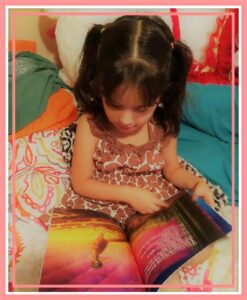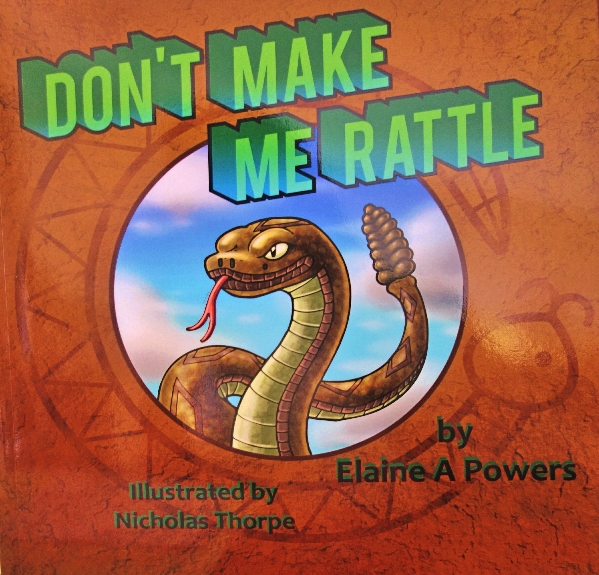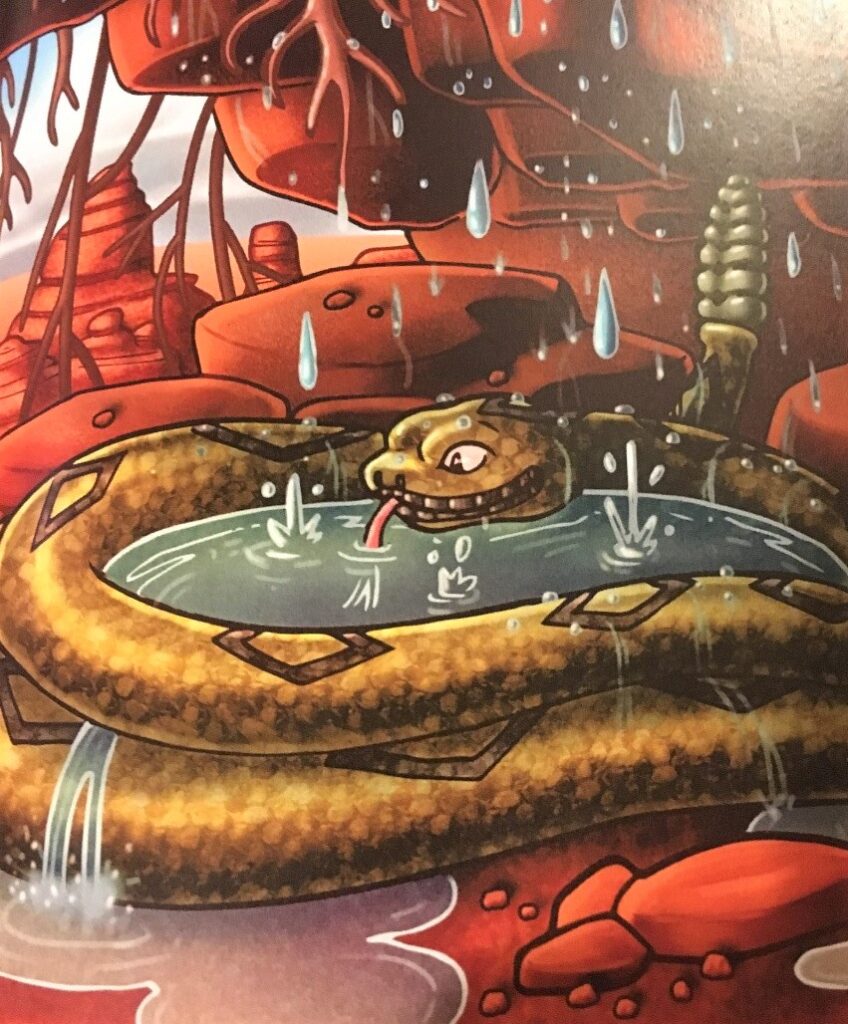Voted 5-Stars by the
Preschool Crowd,
Who Now Know
the Differences Between
Turtles and Tortoises.
Colorfully Illustrated
by Nicholas Thorpe
Written in Rhyme
20 Pages
COMPLETE
BOOK DESCRIPTION HERE
There are many differences between tortoises and turtles, and the wise tortoise who narrates this book tells us about ten of those differences–in rhyme.
She also says, “Don’t Call Me Turtle!” (Even if my name should be Myrtle.)
 Myrtle, Elaine’s red-foot tortoise grew so exasperated by being called a ‘turtle’ that she asked Elaine to write her story. Here they are together, with Elaine reading the book to Myrtle shortly after it was published.
Myrtle, Elaine’s red-foot tortoise grew so exasperated by being called a ‘turtle’ that she asked Elaine to write her story. Here they are together, with Elaine reading the book to Myrtle shortly after it was published.
A Review of Don’t Call Me Turtle! By Helene Woodhams
Arizona Daily Star:
“To the casual observer, turtles and tortoises appear to share so many similarities that we often use the names “turtle” and “tortoise” interchangeably. But the fact is that they couldn’t be more different, says Elaine Powers, whose charming picture book employs clever rhymes and colorful illustrations to demonstrate why the two should never be confused.
To begin with, while some turtles were built to paddle around in the water, she says, tortoises were not – throw a tortoise in the water, and he’ll drown. And that’s just the beginning of her lesson about these special — and very distinctive — reptiles, a lesson sure to fascinate junior naturalists and animal lovers.

A Fun Favorite of Young
and Old Alike!
For Learners Grades K-4
Reading Level
Age 8+
Colorfully Illustrated
by Nicholas Thorpe
Written in Rhyme
20 Pages
Tales abound about the speed, strength and courage of Roadrunner. They are fascinating and welcomed visitors throughout Southern Arizona.
Ever wondered why this bird doesn’t fly? Read this book and you’ll find out why. Learn how the males woo a mate and warm the nest, and about the footprint they leave that cannot be tracked–and much more!
A Review of Don’t Make Me Fly! By Helene Woodhams
Arizona Daily Star:
What a curious creature the Roadrunner is! This iconic desert bird prefers hoofing it to flying, and its footprints are the same backward as they are forward. With vibrant illustrations by Nicholas Thorpe, this picture book is jam-packed with scientific facts about roadrunners, delivered in verse form to keep the narrative lively. Roadrunners
“grab their victim
behind its head
And bash it on
the ground until it’s dead.” Want to know how to swallow a horned lizard? Keep reading! Don’t Make Me Fly! is recommended for children in grades K-4.

This young lady is enjoying the science-based book–so much so, that her Mom emailed a picture to me.

There’s Much More to Me
Than You Know!
I Am Shy and My
Rattle is Only a Warning:
Please, Stay Away!
For All Ages
Reading Level 8+
Bold and Vibrant Illustrations
by Nicholas Thorpe
Written in Rhyme
40 pages
COMPLETE
BOOK DESCRIPTION HERE
Learn all about the rattlesnake’s place in our ecosystem. Learn why we should respect them, not fear them.
See why they flick their tongues, learn why they are called pit vipers, the purpose of the venom, and much, much more in this in-depth look at rattlesnakes.
A Review of Don’t Make Me Rattle! By Helene Woodhams
Arizona Daily Star:
“A rattle from a reptile is not a welcome sound, but if it makes you tread carefully, it’s served its purpose, says Tucson author Elaine A. Powers. In a picture book chock-full of rattlesnake facts, she emphasizes the good they do (eating rodents, scattering seeds, and aiding cancer research), as she imparts interesting reptilian lore. For instance, although toxic to those on the receiving end, venom acts like saliva for a rattlesnake, a necessary digestive aid since they lack teeth for chewing. And rattlers are surprisingly social creatures who bunk together when it’s cold–forming a ‘rhumba’ of rattlers. An unabashed rattlesnake fan, Powers bemoans how willingly we exterminate them, largely because they look so unlovable. She gets no argument there from illustrator Nicholas Thorpe, whose threatening rattlesnake pictures, some with mouths agape and dripping venom, are undeniably scary. The third in the “Don’t” series is for kids in grades K-4.”


